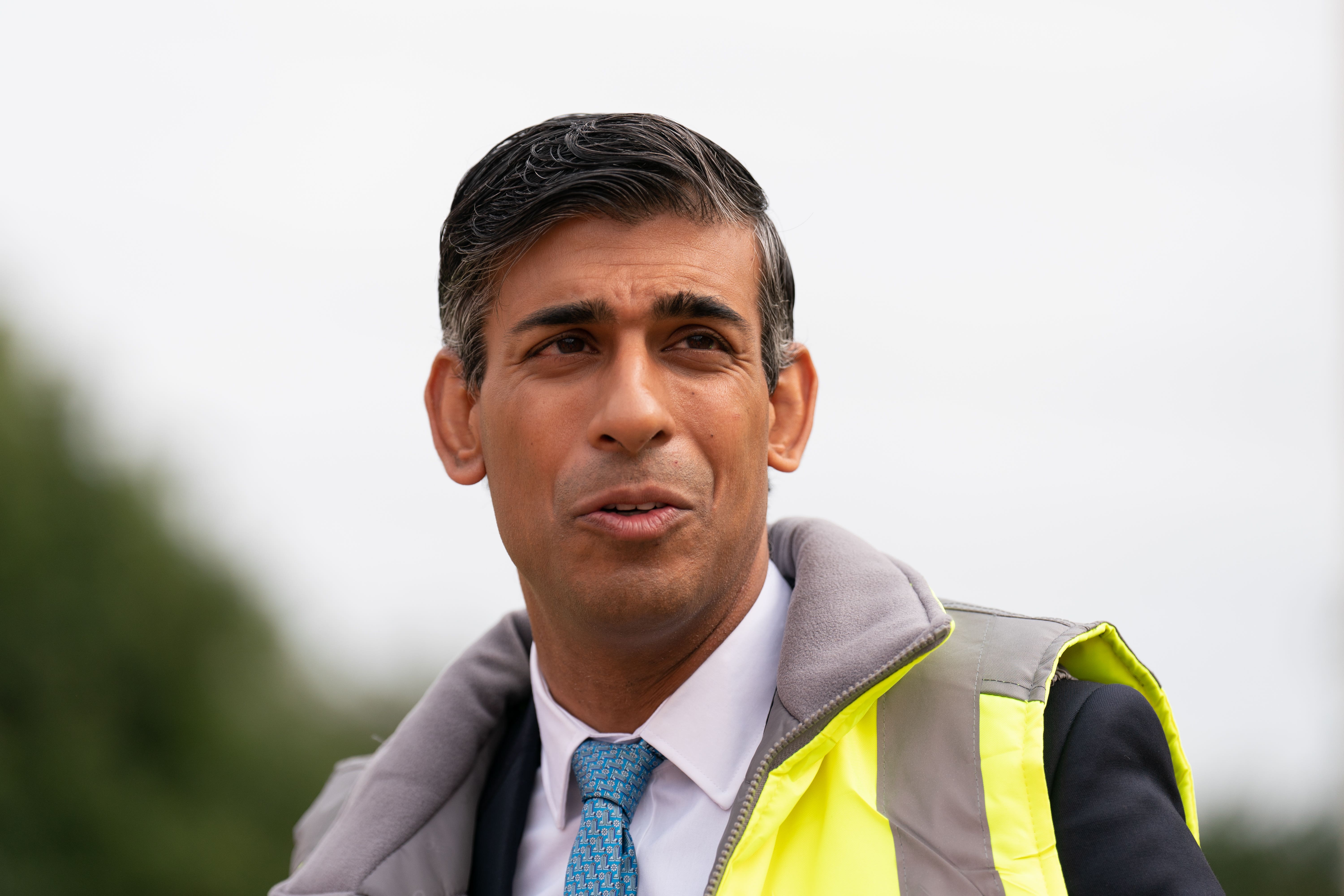Did Rishi Sunak cut funding for new schools and how many have been built?
The Prime Minister has been accused of cutting plans to build new schools amid concerns about deteriorating concrete.

Your support helps us to tell the story
From reproductive rights to climate change to Big Tech, The Independent is on the ground when the story is developing. Whether it's investigating the financials of Elon Musk's pro-Trump PAC or producing our latest documentary, 'The A Word', which shines a light on the American women fighting for reproductive rights, we know how important it is to parse out the facts from the messaging.
At such a critical moment in US history, we need reporters on the ground. Your donation allows us to keep sending journalists to speak to both sides of the story.
The Independent is trusted by Americans across the entire political spectrum. And unlike many other quality news outlets, we choose not to lock Americans out of our reporting and analysis with paywalls. We believe quality journalism should be available to everyone, paid for by those who can afford it.
Your support makes all the difference.The ‘crumbly concrete crisis’ has put spending on school maintenance in the spotlight, with claims that the Government has not spent enough on new school buildings.
Capital spending has fallen and remains below the Department for Education (DfE)’s own estimates of what it needs, with many school buildings containing reinforced autoclaved aerated concrete (Raac) still to be replaced.
Below, the PA news agency looks at what is being claimed about the Government’s record on new schools and whether it matches up to what has happened in recent years.
– What is being claimed?
Jonathan Slater, the former top civil servant at the DfE, told the Today programme Rishi Sunak cut funding for new schools while chancellor, reducing the number being built annually from 100 to 50.
The Prime Minister has denied these claims, saying he introduced a programme to build 50 new schools per year, roughly in line with previous levels of school rebuilding and refurbishment programmes since 2010.
– How many new schools have been built?
In June 2020, the Government announced its School Rebuilding Programme, set to last a decade and build or rebuild 500 schools – a rate of 50 per year.
That programme was reaffirmed in the 2021 spending review overseen by Mr Sunak.
It replaced the second phase of the Priority Schools Building Programme (PSBP2) which was introduced in 2016 to tackle those school buildings in the worst condition.
PSBP2 was supposed to run for five years and rebuild or substantially refurbish buildings at 272 schools – a rate of 54 per year. Delays caused by Covid and increasing costs meant only 256 of those schools had been delivered by March 2023, which amounts to around 37 schools per year.
– What counts as a new school?
As with the Government’s promise to build 40 new hospitals, neither PSPB2 nor the Schools Rebuilding Programme necessarily involve building completely new schools.
The programmes are supposed to target those buildings most in need of replacement, meaning they provide schools with a new block or blocks rather than entirely new facilities.
However, this includes those most affected by the use of the Raac that has led to more than 100 schools having to close facilities at short notice this month.
– What happened to funding?
According to the widely respected Institute for Fiscal Studies (IFS), funding for school maintenance remains at historically low levels.
In the three years up to 2010, when the last Labour government’s school building programme reached its peak, the DfE’s average capital budget was around £10 billion a year (in current prices). In the three years up to 2024, the department is expected to spend an average of £5.2 billion a year.
Focusing on maintenance, the IFS said spending was forecast to be only 3% higher in real terms than it was in 2016/17.
Mr Sunak’s time as chancellor did coincide with a fall in spending on school rebuilding programmes, falling from £765 million in 2019/20 to £416 million two years later, according to the National Audit Office (NAO).
But these figures reflect the conclusion of the PSBP2 scheme, while the School Rebuilding Programme Mr Sunak supported as chancellor was yet to get going. When it does, spending is forecast to rise to £1.1 billion in 2024/25.
– Is it enough?
While Mr Sunak may have initiated a programme that will boost funding for school rebuilding and maintenance, the money provided still falls well short of the Government’s own estimates of what is needed.
In June this year, the NAO published a report outlining the shortfall between what was required and what was being provided.
In its report, the NAO said the DfE had estimated its “best practice” level of capital funding would be £7 billion a year and that it would need £5.3 billion “to maintain schools and mitigate the most serious risks of building failure once it had expanded its School Rebuilding Programme”.
Owing to the fact it would take time to increase spending, the department asked for £4 billion a year at the 2020 spending review, when Mr Sunak was chancellor, but got only £3.1 billion.
This was only three-quarters of what it asked for and less than half the “best practice” figure the department had estimated.
The NAO said: “In recent years, funding for school buildings has not matched the amount DfE estimates it needs, contributing to the estate’s deterioration.”